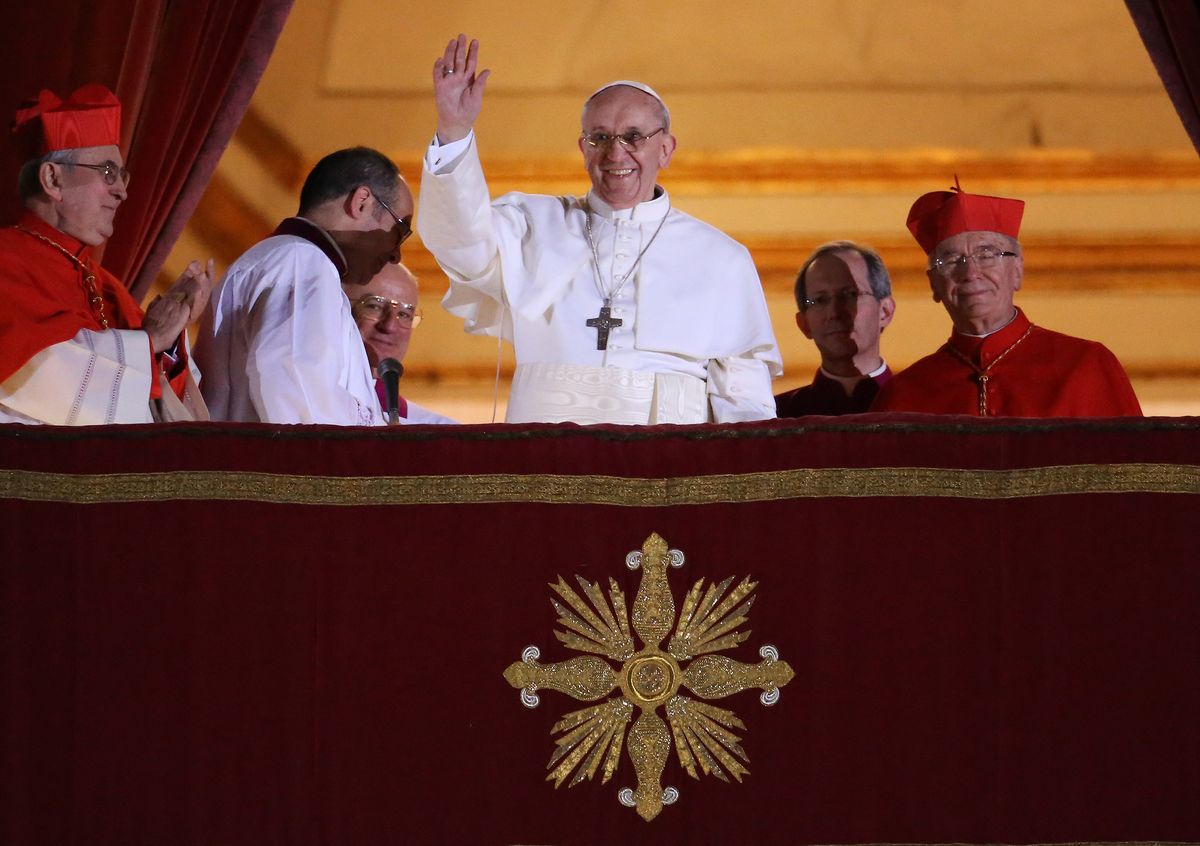On March 13, 2013, white smoke billowed from the Sistine Chapel, signaling the long-awaited announcement: Habemus Papam—“We have a pope.” All eyes turned to St. Peter’s Basilica in Rome, the heart of the Catholic Church and home to the Vatican. On the second day of the conclave, during the fifth round of voting, the cardinals selected the successor to Pope Benedict XVI.
Jorge Mario Bergoglio, the Archbishop of Buenos Aires, was chosen as the new Pope, taking the name Francis, a post he held until he passed away on April 21st, Easter Monday 2025.
In 'Hope', the first-ever autobiography by a sitting pope, Pope Francis shares his personal account of that historic moment and the days that followed. Among those things, he called his sister, María Elena—the youngest of five siblings and the only one still living. That evening, he had dinner with the cardinals at Santa Marta, the simple residence in Vatican City where he has lived since the start of his papacy and plans to remain. The next day, he visited the Basilica of Saint Mary Major to pray to the Virgin Mary, to whom he was deeply devoted.
“As a cardinal, I always went there, and I continue to go, both before and after apostolic trips, so that she may accompany me like a mother, tell me what I must do, and watch over my actions. With the Virgin, I feel safe,” he reveals in Chapter 17. He also confesses that this is where he wishes to rest forever.
“When I pass away, I will not be buried in St. Peter’s, but in Saint Mary Major. The Vatican is the home of my final service, not my eternity”
According to his own words, the Pope has always been clear about how he wants his farewell to be—simple and without great ceremony, true to his personality and religious journey. “I will be in the room where they now keep the candelabras, near that Queen of Peace, to whom I have always turned for help and whose embrace I have sought more than a hundred times during my pontificate.
“I have been assured that everything is ready,” he explains in paragraphs that convey serenity and certainty yet touch the heart. The highest representative of the Catholic faith had not only envisioned but also organized and prepared everything. “The funeral rites were too elaborate, so I spoke with the master of ceremonies to simplify them: no catafalque, no ceremony for sealing the coffin. With dignity, but like any other Christian,” he states.
Inside Saint Mary Major
Saint Mary Major is the most significant church in the world dedicated to the Virgin Mary and one of the four major basilicas in Rome. Founded in the 4th century, it showcases a blend of Early Christian, Romanesque, Baroque, and Renaissance architecture, reflecting centuries of faith and artistic achievement. Inside, it features stunning treasures, including a soaring ceiling adorned with the first gold brought from the Americas, a breathtaking apse mosaic, and the revered icon of the Virgin Salus Populi Romani (Protector of the Roman People).
Beneath the main altar, like in all papal basilicas, there is a small crypt where visitors can see a relic believed to be from the very manger where Jesus was born. This underground space is a sacred site for pilgrims who visit the basilica. The church also preserves original 5th-century mosaics along the nave and triumphal arch, making them some of the oldest surviving artworks of their kind in Rome.
One remarkable fact about Saint Mary Major is that, unlike Rome’s other major basilicas, it has retained its original Early Christian structure despite undergoing centuries of renovations. This continuity makes it a unique link between the past and present. Its medieval bell tower, soaring 246 feet (75 meters), is the tallest in Rome.
Devoted to Mary like his grandmother Rosa and father Enrique
“By showing mercy and choosing” has been Pope Francis’ motto since his time as a bishop and later as Pope, reflecting his deep devotion to the Virgin Mary. In Catholic tradition, Mary is seen as a symbol of God’s compassionate love for humanity.
“I have personally felt how Mary’s maternal gaze can bring light to darkness and restore hope. It’s a gaze that instills confidence and offers tenderness”
"A world that looks to the future without a mother’s perspective is simply short-sighted. My grandmother Rosa and Father Enrique taught me through their example that the Virgin Mary isn’t just a symbol, she’s essential. The foundation of humanity rests on that perspective, it rests on mothers."
,type=downsize)
